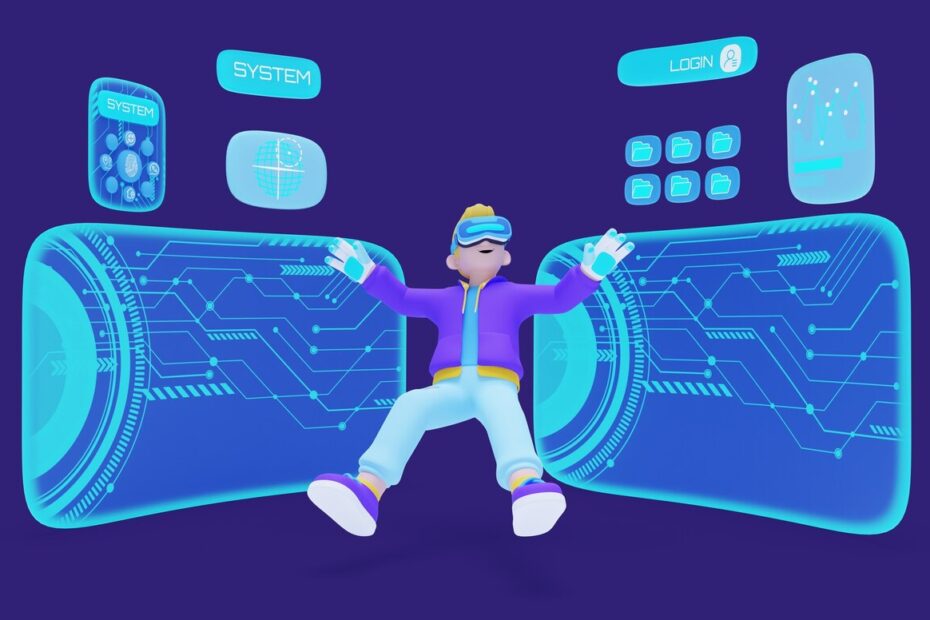Augmented Reality (AR) has transitioned from science fiction to a tangible technology reshaping various industries. By overlaying digital information onto the real world, AR offers immersive experiences that enhance how we interact with our surroundings. As Augmented Reality technology continues to evolve, its integration into software development is becoming increasingly significant, promising to revolutionize user experiences and application functionalities.
Enozom is at the cutting edge of augmented reality in software development, driving innovation and creating solutions that enhance user experiences across various industries. As AR technology continues to evolve, Enozom’s commitment to quality and innovation positions them to lead the way in developing the next generation of AR applications. By addressing challenges and leveraging emerging trends, Enozom is helping to shape a future where AR seamlessly integrates into our digital lives, transforming how we interact with the world.
Current State of Augmented Reality
Hardware and Software Advancements
The current landscape of AR is marked by significant advancements in both hardware and software. Devices like Microsoft HoloLens, Magic Leap, and AR-enabled smartphones provide platforms for AR applications. On the software side, ARKit (Apple) and ARCore (Google) have democratized AR development, enabling developers to create sophisticated AR experiences without extensive expertise in computer vision.
Industry Applications
Industries such as gaming, retail, healthcare, and education have already begun leveraging AR. Games like Pokémon Go and retail applications that allow virtual try-ons have demonstrated AR’s potential. In healthcare, AR aids in complex surgeries and medical training, while educational apps provide interactive learning experiences.
Trends Shaping the Future of AR in Software Development
Enhanced Hardware Capabilities
Future AR devices will likely feature more powerful processors, better sensors, and improved display technologies, making AR experiences more seamless and realistic. Wearable AR devices, such as smart glasses, are expected to become more mainstream, offering hands-free interactions and increased portability.
AI and Machine Learning Integration
The integration of AI and machine learning with AR will enable more intelligent and responsive AR applications. AI can enhance object recognition, environment understanding, and user interaction, making AR applications more intuitive and adaptive. For example, an AI-powered AR app could recognize and annotate objects in real-time, providing contextual information seamlessly.
Cloud-Based AR
Cloud-based AR solutions will allow for more complex and large-scale AR experiences. By offloading processing to the cloud, AR applications can leverage greater computational power and storage, enabling more detailed graphics and real-time data processing. This approach also facilitates collaborative AR experiences, where multiple users can interact with the same virtual objects and environments.
Implications for Software Development
New Development Paradigms
AR introduces new paradigms in software development, requiring developers to think beyond traditional 2D interfaces. Designing for AR involves creating 3D models, understanding spatial relationships, and ensuring seamless interaction between virtual and physical elements. This shift necessitates new skills and tools for developers.
Cross-Platform Development
As AR becomes more ubiquitous, the need for cross-platform AR development will grow. Tools and frameworks that allow developers to build AR applications for multiple devices and operating systems from a single codebase will become essential. Unity and Unreal Engine are examples of platforms that support cross-platform AR development.
User Experience (UX) Design
The immersive nature of AR demands a rethinking of UX design principles. Developers must consider factors such as user comfort, intuitive interactions, and the balance between virtual and real-world elements. Ensuring that AR experiences are not overwhelming or disorienting is crucial for user adoption and satisfaction.
Challenges and Considerations
Technical Limitations
Despite advancements, AR technology still faces technical limitations, such as limited field of view, battery life constraints, and latency issues. Addressing these challenges will be crucial for the widespread adoption of AR.
Privacy and Security
AR applications collect and process a vast amount of data about the user’s environment and actions, raising privacy and security concerns. Developers must implement robust data protection measures and be transparent about data usage to build trust with users.
Accessibility
Ensuring that AR applications are accessible to all users, including those with disabilities, is an important consideration. Developers should follow inclusive design principles and provide alternative interaction methods to accommodate diverse user needs.
Future Opportunities
Education and Training
AR has the potential to transform education and training by providing immersive and interactive learning experiences. Virtual simulations, hands-on practice, and visual aids can enhance understanding and retention of information.
Remote Collaboration
AR can facilitate remote collaboration by enabling virtual presence and interaction with shared digital objects. This capability can enhance teamwork and productivity, particularly in fields such as engineering, architecture, and design.
Healthcare Innovation
In healthcare, AR can improve diagnostic accuracy, surgical precision, and patient outcomes. AR applications can guide medical professionals during procedures, visualize complex medical data, and provide patients with interactive information about their conditions.
Conclusion
The future of augmented reality in software development is bright, with vast potential to enhance user experiences and transform various industries. As hardware capabilities advance, AI and cloud-based solutions mature, and development paradigms evolve, AR will become an integral part of our digital lives. However, developers must address technical, privacy, and accessibility challenges to unlock the full potential of AR. Embracing these opportunities and overcoming the obstacles will pave the way for a future where augmented reality seamlessly integrates into our everyday experiences, revolutionizing the way we interact with the world.
